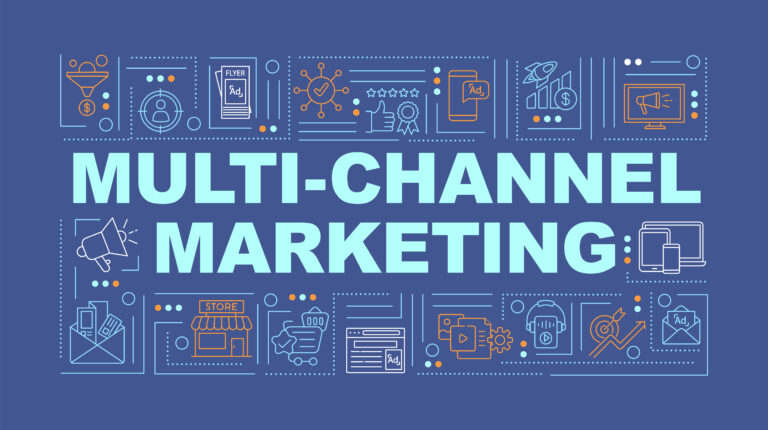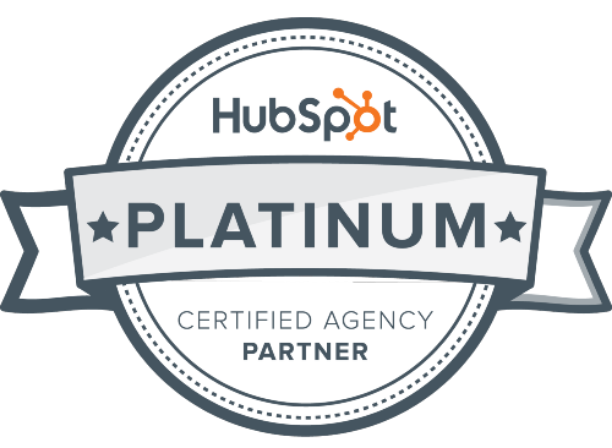You may agree or disagree with the famous observation “all politics is local,” but a tough truism to argue with: All online search is (at least a little) local.
Google and other search engines take location relevance into consideration when they’re delivering results. Which means if local SEO isn’t part of your small business’ SEO strategy, your SEO strategy is due for an update.
This isn’t just about reacting to search engine algorithms. A few pieces of data that tell your audience’s story (compiled by Forbes Advisor):
46% of all Google searches are local.
Four in five people use search engines for local queries.
“Open now near me” searches keep jumping 400% year over year.
Users like local search results, so search engine algorithms increasingly want to deliver locally relevant information. By paying attention to local SEO, you’re giving your users and the search engine algorithms what they want.
Local SEO vs. National SEO
Unlike more general search engine optimization strategy, local SEO is about hyper-targeting audiences in your geographical area. It’s about being visible in local search results, appearing on maps, and being part of conversations in your community.
Broader SEO strategies cast a big, broad net in the open ocean, focusing on ranking in search results across a national or global audience. Local SEO is spearfishing, knowing exactly who and where your customer is and targeting them precisely.
Why Local SEO Matters: The Benefits
For small businesses, a focused local SEO strategy can impact the visibility of your brand in a big way, and directly affect how successfully your business competes in your local market.
A few specific benefits of local SEO:
Immediate and Targeted Reach
Well-implemented local SEO puts your business directly in front of qualified local customers who are actively searching for services or products like yours. That right place/right time relevance can vastly improve the chances of converting searches into sales.
Building Trust and Credibility
People tend to trust businesses that appear front-and-center in their local searches, and that trust is solidified when your presence is consistent across multiple local directories and platforms.
Cost-Effective Marketing Results
ROI can be hard to track with many traditional forms of advertising. Since local SEO efforts target users who are already interested in what you make or do, you spend less time and money chasing a relevant audience, and that ROI is clear.
Edging Out Bigger Names
When you optimize for local search, you put your brand on the map—more specifically, that big map at the top of Google’s results page. The convenience of location can give you a competitive edge with local customers, even over larger businesses with bigger online advertising budgets.
Understanding Local Search Ranking Factors
For your Local SEO strategy to deliver, you need to understand and leverage specific local search ranking factors. Search engine algorithms are looking at these specific indicators when they’re calculating where your business ranks in local search results:
Proximity: how close your business is to the searching user.
Relevance: how well your business matches the search query.
Prominence: how well-known or reputable your business is, both online and offline.
When you know what search engines are looking for, you can start focusing on highlighting your company’s proximity, relevance, and prominence in a way that works.
Steps to Set You Up for Local SEO Success
There’s no one-and-done solution in local SEO (or SEO in general). But these practical steps and tactics are tried-and-true ways to optimize for crucial local search ranking factors. Start with this local SEO guide and you’ll be on a solid path to success.
1. SET UP GOOGLE AND BING BUSINESS PROFILES
By setting up and optimizing your business profiles on these two key search platforms, you’re able to manage how your brand appears on their search results pages and maps.
Your Google Business Profile and Bing Places for Business profiles serve a kind of digital-storefront purpose for each search engine, making your business more visible and accessible to potential local customers. Setting them up is free, pretty simple, and more than worth it.
How to set up Your Google Business Profile and Bing Places for Business profile:
Create or claim your business listing.
Visit the Google Business Profile Manager (click the “manage now” button) and com and follow the steps to either claim your existing business listing or create a new one.
Provide accurate, comprehensive information.
Fill in all the necessary details about your business, including name, address, phone number, website, hours of operation, and business category.
Verify your business.
Google and Bing both take steps to verify your business before updating anything (for obvious reasons), usually via email or phone.
Add updates and engage with your customers.
Regularly update your profile with photos of your business, products, or services. Customer service fundamentals apply here too—it’s a good practice to respond to customer reviews and engage with your happy (or frustrated) customers.
2. ENSURE NAP CONSISTENCY
A crucial component to local SEO success: NAP consistency. NAP stands for name, address, and phone number, and there are multiple reasons why you want to keep these basic details consistent across the digital board (your website, search engine business profiles, social channels, etc.).
NAP consistency ensures that your customers are getting accurate information, no matter where they’re finding you, and it strengthens your local SEO, too. Any discrepancies in your business’ NAP will confuse search engine algorithms and that can negatively affect your local search ranking potential.
3. BUILD A KEYWORD UNIVERSE AROUND YOUR LOCAL AUDIENCE
The heart of any successful local SEO strategy is local keywords optimization. That starts with identifying a keyword universe of queries that potential local customers are likely to use when searching for products or services like yours.
Start by brainstorming phrases that describe your business, including the location. That might be “Strategic marketing agency in Nashville,” or “Caterpillar dealer in central Pennsylvania.” SEO keyword tools (like Semrush’s Keyword Magic Tool, Ahrefs’ Keywords Explorer, or even Google’s Keyword Planner) can help you turn those brainstormed ideas into a focused list of location-specific keywords.
Aim to stay relevant and specific. The more targeted your keywords are to your local area, the more likely you are to attract your ideal audience. Local SEO is about quality traffic, not just quantity. It’s about being seen by the right people, right when they need you.
The next step is to incorporate those locally focused keywords into your website’s content, meta tags, and URLs. It’s important to do it naturally—forced or excessive usage (keyword stuffing) hinders your SEO efforts more than helps.
4. IMPLEMENT ON-PAGE SEO TO MAKE YOUR WEBSITE LOCALLY FRIENDLY
With your keyword universe outlined, you can start implementing on-page SEO practices to put your local SEO strategy to work. This includes optimizing content and other elements on your website to make it more visible and relevant to search engines and local users.
An on-page SEO checklist that can get you started:
- Optimize content for local keywords.
Ensure that your local keywords are included in key areas such as title tags, header tags, and throughout your site content (where natural and appropriate).
- Create location-specific pages.
If your business serves multiple locations, consider creating dedicated pages for each location with tailored content (that’s optimized using your local keywords).
- Ensure mobile-friendliness.
According to Statista, 63% of organic search engine visits happen on mobile devices. And mobile browsing accounts for almost half of all website traffic. So if your website isn’t performing well on mobile, you might be turning off or turning away a large portion of your ideal audience.
- Implement local business schema markup.
Schema markup (or structured data) is a kind of back-end microdata added to your website to help search engines understand the content better. For Local SEO, implementing local business schema markup is a must.
It’s standardized and specific (including information like your business name, street address, hours, GeoCoordinates, reviews, and more). And if you do it properly, it’s doubly beneficial: Adding structured data/schema markup helps you get found and it gives users an easy, at-a-glance snippet experience on search.
Google has a clear breakdown on how to set up local business structured data. Bing also provides a how-to on marking up your website.
5. EXPAND YOUR LOCAL REPUTATION WITH OFF-PAGE SEO
SEO strategy isn’t confined to just your website. On-page SEO efforts help you optimize your online home. Off-page SEO is about boosting your business’ presence and reputation elsewhere on the internet, and beyond the browsers too.
It might not be the first thing you think of when you’re contemplating SEO strategy, but off-page SEO efforts play a crucial role in your local SEO success.
A few off-page SEO pointers to get you going:
- Make connections for local link building.
Search engines love backlinks. When other websites (especially ones with high relevance and authority) link to your page, Google and Bing see that as a vote of confidence about your content and your brand. That increases your site’s credibility, and helps you rank.
When it comes to local SEO, personal connections are a powerful path to link building.
You might collaborate with other local businesses (blogs, events-focused online calendars, travel resources) to get mentioned and linked in their content. Sending out press releases to local media (newspapers, radio stations) can result in earned media coverage and valuable backlinks. Sponsoring or participating in local events can earn you mentions and links on those sites, too.
- Add your brand (or claim your listing) on local business directories.
It’s free (and worthwhile) to own and update your business listing on Yelp, YP (the Yellow Pages), and other online business directories. Joining your local chamber of commerce could get you in their business listings too. - Encourage customer reviews.
Online reviews are powerful. Key data to back that up: 98% of people read online reviews for local businesses; nearly half (45%) say they won’t purchase a product if there are no reviews available.
One way to get more reviews for your business: Ask your customers—in person, on social media, and/or via email. A third of consumers said they’d be likely to leave a review if a business asked them to.
Looking for a Local SEO Partner?
Search engine optimization is a time-consuming discipline, and for many small businesses, outsourcing is a much more sustainable way to keep the SEO efforts going. Snapshot’s Digital Team leads local SEO services and general SEO efforts for clients across the U.S., so if you’re looking for SEO support, we’re here to help.
Contact Snapshot, tell us about your SEO needs (and broader marketing goals), and we’ll point the way forward








